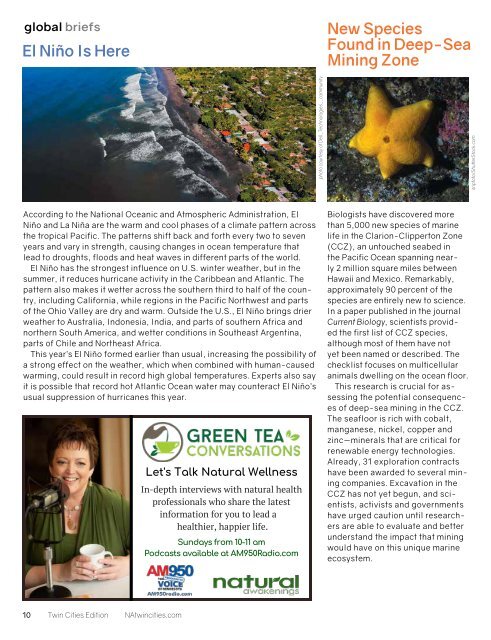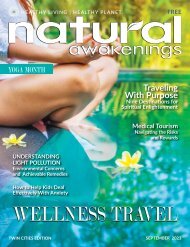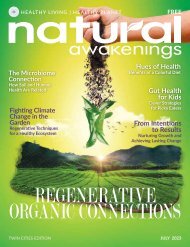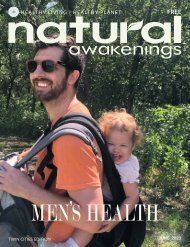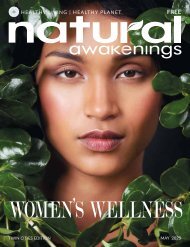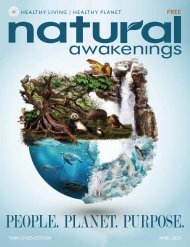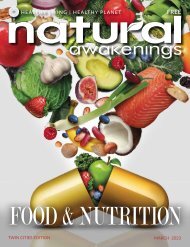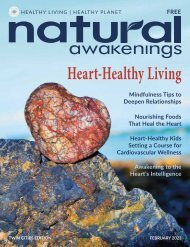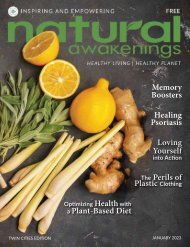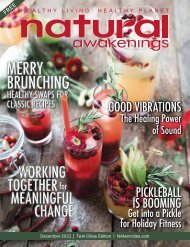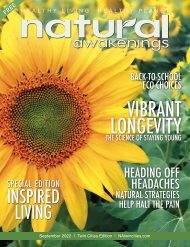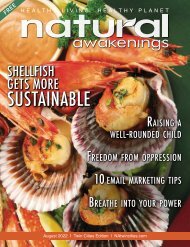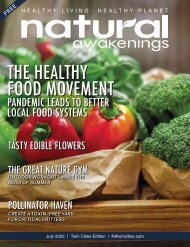Natural Awakenings Twin Cities August 2023
Read the August 2023 edition of Natural Awakenings Twin Cities magazine. This is our annual Self-Empowerment Issue featuring articles on stepparenting success, steps for successful school year transition, lifelong learning, mushroom for fun and health, letting nature heal itself, navigating food restrictions at school and so much more! Be sure to check out our local content, including News Brief announcements, Community Resource Guide with providers throughout the metro who can meet your individual wellness needs, and all the happenings in the Calendar of Events. There is additional online-only content that can be found at NATwinCities.com.
Read the August 2023 edition of Natural Awakenings Twin Cities magazine. This is our annual Self-Empowerment Issue featuring articles on stepparenting success, steps for successful school year transition, lifelong learning, mushroom for fun and health, letting nature heal itself, navigating food restrictions at school and so much more!
Be sure to check out our local content, including News Brief announcements, Community Resource Guide with providers throughout the metro who can meet your individual wellness needs, and all the happenings in the Calendar of Events. There is additional online-only content that can be found at NATwinCities.com.
Create successful ePaper yourself
Turn your PDF publications into a flip-book with our unique Google optimized e-Paper software.
global briefs<br />
El Niño Is Here<br />
New Species<br />
Found in Deep-Sea<br />
Mining Zone<br />
photo courtesy of Dell_Technologies__community<br />
sripfoto/ShutterStock.com<br />
According to the National Oceanic and Atmospheric Administration, El<br />
Niño and La Niña are the warm and cool phases of a climate pattern across<br />
the tropical Pacific. The patterns shift back and forth every two to seven<br />
years and vary in strength, causing changes in ocean temperature that<br />
lead to droughts, floods and heat waves in different parts of the world.<br />
El Niño has the strongest influence on U.S. winter weather, but in the<br />
summer, it reduces hurricane activity in the Caribbean and Atlantic. The<br />
pattern also makes it wetter across the southern third to half of the country,<br />
including California, while regions in the Pacific Northwest and parts<br />
of the Ohio Valley are dry and warm. Outside the U.S., El Niño brings drier<br />
weather to Australia, Indonesia, India, and parts of southern Africa and<br />
northern South America, and wetter conditions in Southeast Argentina,<br />
parts of Chile and Northeast Africa.<br />
This year’s El Niño formed earlier than usual, increasing the possibility of<br />
a strong effect on the weather, which when combined with human-caused<br />
warming, could result in record high global temperatures. Experts also say<br />
it is possible that record hot Atlantic Ocean water may counteract El Niño’s<br />
usual suppression of hurricanes this year.<br />
Let's Talk <strong>Natural</strong> Wellness<br />
In-depth interviews with natural health<br />
professionals who share the latest<br />
information for you to lead a<br />
healthier, happier life.<br />
Sundays from 10-11 am<br />
Podcasts available at AM950Radio.com<br />
Biologists have discovered more<br />
than 5,000 new species of marine<br />
life in the Clarion-Clipperton Zone<br />
(CCZ), an untouched seabed in<br />
the Pacific Ocean spanning nearly<br />
2 million square miles between<br />
Hawaii and Mexico. Remarkably,<br />
approximately 90 percent of the<br />
species are entirely new to science.<br />
In a paper published in the journal<br />
Current Biology, scientists provided<br />
the first list of CCZ species,<br />
although most of them have not<br />
yet been named or described. The<br />
checklist focuses on multicellular<br />
animals dwelling on the ocean floor.<br />
This research is crucial for assessing<br />
the potential consequences<br />
of deep-sea mining in the CCZ.<br />
The seafloor is rich with cobalt,<br />
manganese, nickel, copper and<br />
zinc—minerals that are critical for<br />
renewable energy technologies.<br />
Already, 31 exploration contracts<br />
have been awarded to several mining<br />
companies. Excavation in the<br />
CCZ has not yet begun, and scientists,<br />
activists and governments<br />
have urged caution until researchers<br />
are able to evaluate and better<br />
understand the impact that mining<br />
would have on this unique marine<br />
ecosystem.<br />
10 <strong>Twin</strong> <strong>Cities</strong> Edition NAtwincities.com


